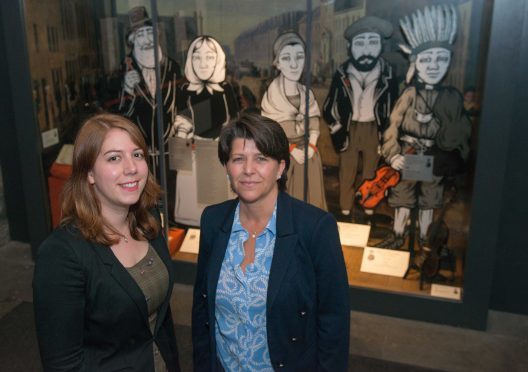The story of five Aberdeen inmates imprisoned in one of the city’s most notorious jails has been told in a new exhibition celebrating the 400th anniversary of the building.
Tales from the Tolbooth explores the early years of one of the best preserved 17th century gaols in Scotland through the experiences of some of its early residents.
The iconic city centre building was built between 1616 and 1629 by Thomas Watson, a master mason from Old Rayne.
Over the years many notorious local characters stayed at the Tolbooth and the exhibition explores the history of the building, and crime and punishment through the experiences of five of its earliest residents – Alexander Fraser, Lillias Skene, Margaret Campbell, Charles Duff and Peter Williamson, who was also known as Indian Peter.
Fraser, born in 1570 as the 9th Lord of Philorth, was one of the first prisoners for “unpaid debts and breaking promises”.
But given his high position he was given keys to come and go at leisure.
The exhibition has been created by Aberdeen City Council’s curator of history Jenny Pape, who worked closely with
Aberdeen City and Aberdeenshire Archives, and Aberdeen University’s special collections centre.
The Tolbooth stopped being used as a prison in the 19th century and was replaced by Aberdeen’s first “modern” prison, the Bridewell, built on what is now Rose Street.
Ms Pape said: “What this exhibition shows is how important your position in society was to what your sentence would be.
For example, Alexander Fraser was given a key to his cell where others were sent to Australia.
“Working on this exhibition has been an amazing opportunity to explore the building through the fascinating characters associated with the Tolbooth and how their stories have been brought to life.”
Deputy council leader Marie Boulton said it was important that the exhibition was interactive.
She said: “What really strikes me is that although these events happened centuries ago, they are still so relevant to what is happening in parts of the world today.
“I think that the days of the old fashioned stuffy museum are long past, with this exhibition we have tried to create an atmosphere that really gets people involved.”
The exhibition runs for the next two months.










